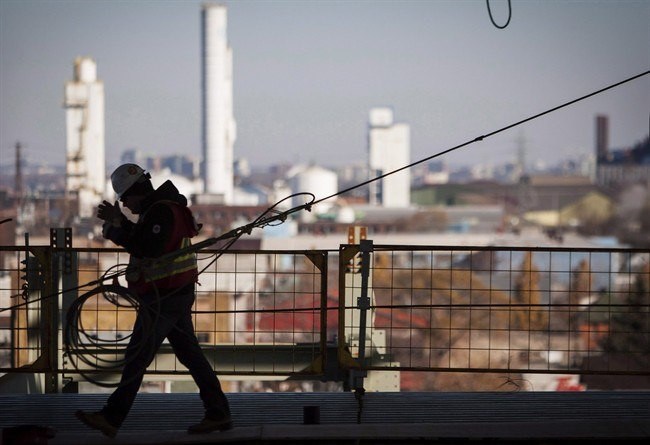EDITOR’S NOTE: This article originally appeared on The Trillium, a Village Media website devoted exclusively to covering provincial politics at Queen’s Park.
The times (and climate) are indeed a-changing.
This July is set to be the hottest month ever. Canada's seen over 100,000 square kilometres of land burned due to constant forest fires. The smoke caused people across Ontario to battle some of the worst air quality in the world.
Even before the weather seemed to take a turn for the worst this summer, Ontario's auditor general highlighted troubling trends with the province's air quality, despite past improvement thanks to phasing out coal.
The changing climate is causing the government to think about how it can better protect workers from some of the worst effects of climate change.
Ontario's labour ministry is moving forward with a plan to regulate heat stress under the Occupational Health and Safety Act (OHSA) and is asking the public for feedback on whether it should add outdoor air quality to the list of hazards it regulates under the law, recently released documents show.
"Heat stress is a significant cause of occupational illnesses that may lead to death. Heat-related illnesses affect all workers. Due to changes in our climate, extreme heat events are a growing health risk to workers in Ontario," one of the regulatory postings said.
Labour Minister Monte McNaughton's office didn't respond to a request for comment.
There were 350 lost-time claims for construction workers alone between 2006 and 2015, according to Workplace Safety and Insurance Board data.
OHSA currently requires employers "to take every precaution reasonable" to protect workers, including "protecting workers from hazardous thermal conditions that may lead to heat-related illnesses."
"But that's vague," said NDP MPP Jamie West. "It comes down to interpretation."
"Clear regulations would really help a lot of people. It would help supervisors, employers and workers and prevent people from getting sick or injured from working," he said.
That's what the recent proposal aims to do.
The proposal would require employers to take all reasonable measures to ensure employees' body temperatures don't go over 38 C. The average body temperature is around 37 C, and 38 C or higher usually means someone is sick with an infection or illness.
The regulatory proposal's looking to establish more specific criteria around exposure limits, determining when someone has heat stress and when someone's at risk. It also proposes employers implement procedures to limit exposure to heat, train workers to notice signs and symptoms, and take steps to protect themselves.
Poor training is something Santiago Escobar, a national representative with the United Food and Commercial Workers Union, has seen firsthand.
Many "agricultural workers don't really have the training. They don't know how to identify the symptoms," he said.
Some of the ways the proposal would mandate limiting exposure to heat include engineering controls — physical changes in the workplace to cut down on heat exposure — at indoor workplaces. This could include air conditioning, better ventilation, and more, according to WorkSafeBC, British Columbia's workers' compensation agency.
Any additional measures — beyond actual changes to the workplace — should be developed by the joint health and safety committee or health and safety representative. The proposal said extra measures should include personal protective equipment (like reflective clothing), sunscreen and appropriate headgear for outdoor workplaces
Joint health and safety committees are advisory bodies in workplaces made up of at least one employee and employer representative, depending on the company's size. Companies with fewer than 20 employees don't need a committee unless they work with a "designated substance" like lead or asbestos.
While smaller companies aren't required to have a committee, they are required to have one worker representative.
The government's also interested in forcing employers to provide "cool, portable drinking water ... close to the work areas, for the use of the workers in hot conditions."
It's a good place to start, West said.
"Bring some workers, bring some experts in the room. Have a conversation, you say what works, what doesn't work, what are the barriers, and that's when you have really good regulations that work for everybody," he said.
The Ontario Public Sector Employees' Union (OPSEU) is encouraged that the government's looking to regulate heat stress and outdoor air quality but isn't quite ready to sing the Tories' praises yet.
"Air quality and heat stress are becoming a more regular occurrence. Considering these in OHSA is a form of climate adaptation — something experts say is crucial to protect people, especially those in vulnerable populations because studies show us that the climate crisis disproportionately impacts low-income, and racialized communities," OPSEU president JP Hornick said in a comment to The Trillium.
The proposals would need a "dedicated enforcement strategy to ensure employers are held accountable for non-compliance with the regulation and their obligations to protect workers," Hornick added.
Ontario Federation of Labour President Patty Coates is "urging" the government to move forward with the regulations, especially with extreme heat and poor air quality becoming more common.
"The absence of legislation to address this situation allows corporations and employers to evade accountability and, in some cases, causes the illness and death of workers," she said in a statement to The Trillium.
The outdoor air quality proposal isn't as fleshed out, as the government's simply looking for input on whether to regulate it under OHSA.
It wants to hear from the public and stakeholders on whether poor outdoor air quality affects workers and what — if anything — the government can do to mitigate the worst effects of working when the air quality's poor.




